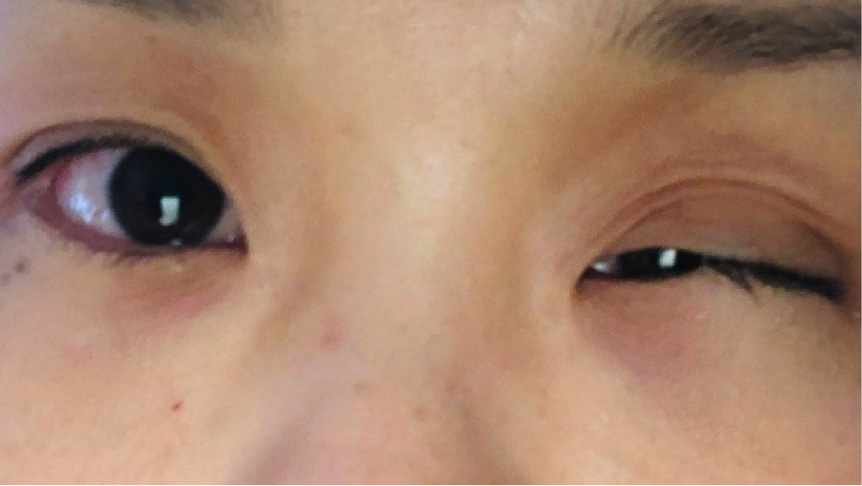 |
| This patient was attempting to perm her eyelashes when things went awry. Photo: Tracy Doll, OD. |
Exposure to toxic or otherwise harmful products accounts for 15.7% of all ocular exposures and 26.2% of cases involving children younger than six. More broadly, cosmetics and personal care products have ranked among the top three exposures reported to the United States Poison Control Centers since 2012. Despite this, only 11% of all 10,500 unique chemical ingredients found in the products that make up this $500 billion industry have been assessed for safety.
To help fill in some clear knowledge gaps regarding the safety profiles of these products, researchers conducted a retrospective analysis of phone calls to US poison centers from 2000 to 2018 concerning eye exposures to cosmetics and personal care products. In total over those 18 years, the centers collectively received 266,743 of those calls, corresponding to a mean of 14,039 calls per year or 38 calls per day.
Children under six represented more than half (51%) of the exposures called into US poison centers over the study period, with the most common age at exposure incidence being two years old. Youth between ages six and 19 and adults represented 19.5% and 29% of exposures, respectively. Most exposures were reported to have happened in residences (91%), followed by schools (5.5%)
While both sexes reported eye exposures at similar rates as young children, a gap eventually formed between them. “Overall, females accounted for 61% of exposures to cosmetics and personal care products,” the study authors wrote. “While the ratio of affected females to males was 1:1 among young children, it rose with increasing age to approximately 4:1 among adults.”
Perfumes, colognes and aftershaves were the cause of the largest number of exposures (19%). “Other commonly implicated subcategories were suntan and/or sunscreen products (11.2% of exposures), nail polishes (9.5%), soaps (6.3%), and creams, lotions and makeup (5.8%),” the authors wrote. “Young children accounted for most exposures involving perfumes, colognes, and aftershaves (77.5%), suntan and/or sunscreen products (77.9%), nail polishes (81.1%), and soaps (44.6%), while adults accounted for the highest proportion of exposures to creams, lotions and makeup (41.1%).”
Importantly, the annual frequency of ocular exposures did significantly decrease throughout the study period by 46%, from 17,495 cases in 2000 to 9,453 in 2018. “This decline in exposures may be attributable, in part, to initiatives to enhance public and industry awareness regarding safer product usage, storage and design,” the authors suggest. Nevertheless, prevention efforts are still needed to further reduce ocular exposures to cosmetics and personal care products, especially among young children who are at the highest risk.
“Parents and caregivers should be educated about these exposures and the importance of storing these products up and away from the reach and sight of young children, preferably in a locked location. Use of child-resistant product containers and packaging is another key prevention strategy,” the researchers concluded. “In addition, containers of potentially ocular-toxic products should be redesigned to reduce confusion with eye dropper bottles and to reduce attractiveness to young children, with immediate priority placed on acrylic nail adhesives. Finally, when possible, reformulation of products to eliminate or reduce ocular toxicity is ideal.”
Remind patients with young children to lock away any products that could present complications if in contact with the eye and advise them on how to react if they ever find themselves in the urgent situation.
Kamboj A, Spiller HA, Funk AR, et al. Cosmetics and personal care products-related ocular exposures reported to United States Poison Control Centers. Ophthalmic Epidemiol. September 21, 2021. [Epub ahead of print]. |

